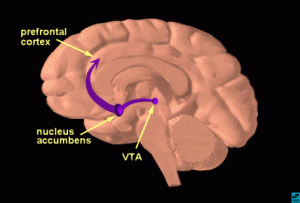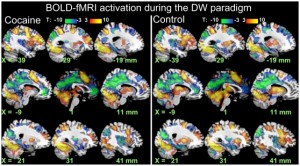ARTICLE OVERIVIEW: The word “cocaine” refers to the drug in both a powder (cocaine) and crystal (crack) form. It is made from the coca plant, and causes a short-lived high that is immediately followed by opposite, intense feelings of depression, edginess, and a craving for more of the drug. This article covers the basic mechanics of how the drug works and how to identify signs of problem.
TABLE OF CONTENTS:
- History
- How It Works
- How Crack Is Made
- Street Names
- Dangers
- Safety
- Signs of Overdose
- What to Do for Overdose
- Help for a Drug Problem
- Your Questions
History
For thousands of years, people in South America have chewed and ingested coca leaves, the source of cocaine, for their stimulant effects. In addition, before the development of synthetic local anesthetics, surgeons used cocaine to block pain. However, research has since shown that cocaine is a powerfully addictive substance that can alter brain structure and function if used repeatedly. [1]
In the early 1900s, purified cocaine was the main active ingredient in many tonics and elixirs developed to treat a wide variety of illnesses and was even an ingredient in the early formulations of Coca-Cola. But in the later 20th century, its production has been amped up and hit the streets. [2]
As an industrialized drug, cocaine is powerfully addictive. Its stimulant effects bring users back over and over again. Today, cocaine is a DEA Schedule II drug, which means that it has high potential for abuse but, can be administered by a doctor for legitimate medical uses, such as local anesthesia for some eye, ear, and throat surgeries. [3]
How Cocaine Works?
A great amount of research has been devoted to understanding the way cocaine produces its pleasurable effects, and the reasons it is so addictive. This NIDA, National Insitute on Drug Abuse diagram illustrates the reward pathway of the brain, as related to cocaine. [4]
Basically, cocaine increases levels of the natural chemical messenger dopamine in brain circuits controlling pleasure and movement. Normally, the brain releases dopamine in these circuits in response to potential rewards, like the smell of good food. It then recycles back into the cell that released it, shutting off the signal between nerve cells. Cocaine prevents dopamine from recycling, causing excessive amounts to build up between nerve cells. This flood of dopamine ultimately disrupts normal brain communication and causes cocaine’s high.
However, occasional use is always followed by a “crash”, a sort of withdrawal. Furthermore, long-term use of cocaine can cause lasting changes in the brain. The study outlines the brain changes as related to dopamine, published in 2010 in PLOS One, a peer reviewed medical journal. [5]
How Crack Is Made
Crack cocaine is an even more addictive form of cocaine that is derived from powdered cocaine using a simple conversion process. Crack emerged as a drug of abuse in the mid-1980s. It is abused because it produces an immediate high and because it is easy and inexpensive to produce.
Crack is produced by dissolving powdered cocaine in a mixture of water and ammonia or sodium bicarbonate (baking soda). The mixture is boiled until a solid substance forms. The solid is removed from the liquid, dried, and then broken into the chunks (rocks) that are sold as Crack Cocaine.
Street Names for Crack Cocaine
As a street drug, cocaine appears as a fine, white, crystalline powder and is also known as:
- 151
- 24-7
- Apple jacks
- B.J.’s
- Baby T
- Bad
- Badrock
- Basa
- Baseball
- Basing
- Beamers
- Beat
- Beautiful boulders
- Bebe
- Beemers
- Bill blass
- Bings
- Bjs
- Black rock
- Bobo
- Bollo
- Bolo
- Bonecrusher
- Bones
- Bopper
- Botray
- Boubou
- Boulya
- Bullion
- Bumper
- Butler
- Candy
- Capsula (Spanish)
- Casper
- Casper the ghost
- CDs
- Chemical
- Chewies
- Cloud
- Cookies
- Crib
- Crumbs
- Crunch & munch
- Devil drug
- Devilsmoke
- Dice
- Dime special
- Dip
- Dirty basing
- Double yoke
- Eastside player
- Egg
- Electric kool-aid
- Famous dimes
- Fat bags
- Fish scales
- French fries
- Fries
- Garbage rock
- Glo
- Golf ball
- Gravel
- Grit
- Groceries
- Hail
- Half track
- Hamburger helper
- Hard ball
- Hard line
- Hard rock
- Hell
- Hotcakes
- Hubba
- Ice cube
- Issues
- Jelly beans
- Johnson
- Kokomo
- Love
- Mixed jive
- New addition
- Nuggets
- Parlay
- Paste
- Patico (Spanish)
- Pebbles
- Piece
- Piedra (Spanish)
- Piles
- Pony
- Prime time
- Product
- Purple caps
- Raw
- Red caps
- Regular “P”
- Rest in peace
- Rock attack
- Rock(s)
- Rocks of hell
- Rooster
- Rox
- Roz
- Schoolcraft
- Scrabble
- Scruples
- Seven-Up
- Sightball
- Sleet
- Snow coke
- Soup
- Space
- Square time Bob
- Stones
- Sugar block
- Swell up
- Tension
- The devil
- Tissue
- Top gun
- Tornado
- Toss-ups
- Troop
- Tweaks
- Twenty rock
- Twinkie
- Ultimate
- Wave
- White ball
- White ghost
- White sugar
- White tornado
- Wrecking crew
- Yale
- Yam
- Yayoo
- Yeah-O
- Yimyom
Dangers
Cocaine is one of the most potentially dangerous drugs. In addition to the usual risks associated with cocaine use (constricted blood vessels; increased temperature, heart rate, and blood pressure; and risk of cardiac arrest and seizure), crack users may experience
- acute respiratory problems
- coughing
- lung trauma and bleeding
- shortness of breath
…each of these can lead to death. Crack cocaine smoking also can cause aggressive and paranoid behavior.
Drug intoxication and addiction can compromise judgment and decision-making and potentially lead to risky sexual behavior, including trading sex for drugs, and needle sharing. This increases a cocaine user’s risk for contracting infectious diseases such as HIV and hepatitis C (HCV). There are no vaccines to prevent HIV or HCV infections.
Even more, cocaine is more dangerous when combined with other drugs or alcohol. One of the big dangers of mixing cocaine and alcohol is that they combine to create a third chemical: cocaethylene. Cocaethylene is produced in the liver and is the biggest reason why the effects of crack intensifies and increases the possibility of sudden death. Additionally, cocaethylene leaves the heart vulnerable to increased breathing and heart rates. [6]
It is easy to lose control over cocaine use and become addicted. Then, even if you get treatment, it can be hard to stay off the drug. People who stopped using cocaine can still feel strong cravings for the drug, sometimes even years later.
Safety
Cocaine is not good for anyone. There is no safe way to take cocaine or crack, and if you have a drug problem, you would probably benefit from quitting this habit as soon as possible.
Signs of Overdose
An overdose occurs when the person uses too much of a drug and has a toxic reaction that results in serious, harmful symptoms or death. An overdose can be intentional or unintentional.
Death from overdose can occur on the first use of cocaine or unexpectedly thereafter. Many people who use cocaine also drink alcohol at the same time, which is particularly risky and can lead to overdose. Others mix cocaine with heroin, another dangerous, and deadly, combination.
The signs and symptoms of a cocaine overdose are:
- Arrhythmias (irregular heart rhythm).
- Confusion.
- Dangerously high body temperature.
- Nausea.
- Psychosis.
- Seizures.
- Severe anxiety or agitation.
- Severe tachycardia (elevated heart rate).
- Stroke.
- Sweating.
- Tremors.
- Very high blood pressure.
Some of the most frequent and severe health consequences leading to overdose involve the heart and blood vessels, including irregular heart rhythm and heart attacks, and the nerves, including seizures and strokes.
What To Do If You Overdose?
CALL 911 if you think you’re experiencing overdose.
First responders and emergency room doctors try to treat the overdose by treating these conditions, with the intent of:
- Restoring blood flow to the heart (heart attack).
- Restoring oxygen-rich blood supply to the affected part of the brain (stroke).
- Stopping the seizure.
Because cocaine overdose often leads to a heart attack, stroke, seizure or even lead to death,
it is very important to call an emergency line and get medical help immediately.
Where to Go for Help
As with other drugs, repeated use of cocaine can cause long-term changes in the brain’s reward circuit and other brain systems, which may lead to addiction. The reward circuit eventually adapts to the excess dopamine brought on by the drug. As a result, people take stronger and more frequent doses to achieve the same high and feel relief from initial withdrawal.
But where can you get help? The following list of medical and behavioral professionals can help diagnose, treat, or refer you to additional services:
- Addiction detox clinics.
- Addiction treatment clinics, vis SAMHSA’s treatment locator. [7]
- Doctors who specialize in addiction medicine. [8]
- Licensed clinical social workers.
- Psychologists or licensed addiction counselor.
- Psychiatrists.
According to the National Institute on Drug Abuse, behavioral therapy is most frequently used to treat cocaine addiction. [9] Examples include:
- Cognitive-behavioral therapy.
- Contingency management, or motivational incentives, providing rewards to persons who remain substance free.
- Therapeutic communities or drug-free residences in which people in recovery from substance use disorders help each other to understand and change their behaviors.
Remember, addiction can bring serious health problems and even death. Detox may not be easy, but it is possible.
You are not alone.
You can also call us for help on the hotline number listed on this page.
Your Questions
Now, we’d like to hear from you!
If you still have questions about coke, please ask us now. Just leave your question or comment in the section below. We will try to get back to you as soon as possible. We are here to help you.













Related Posts